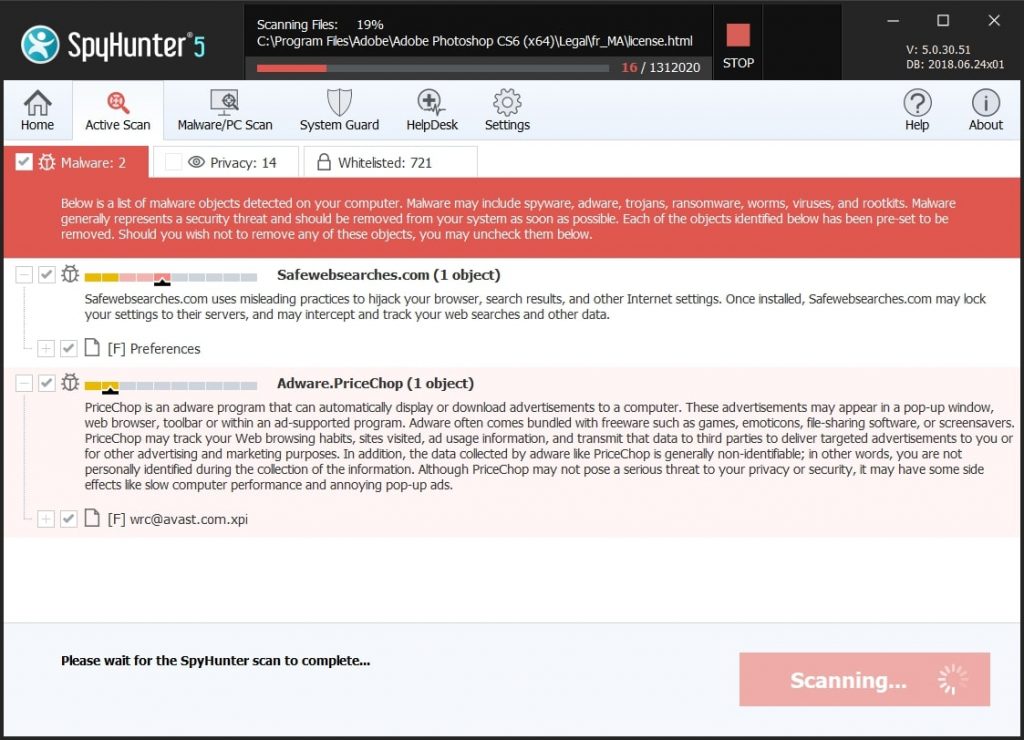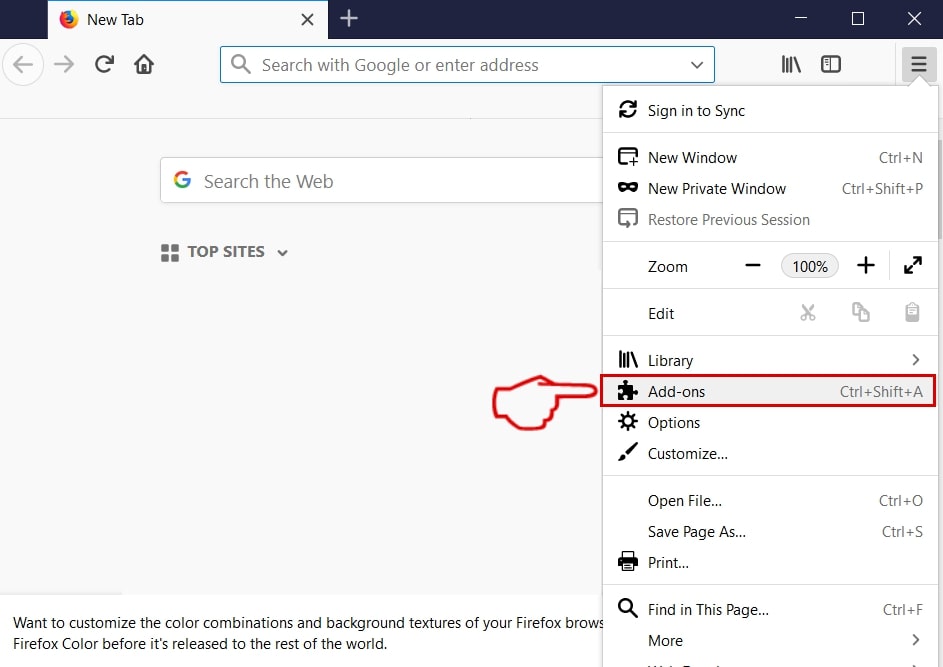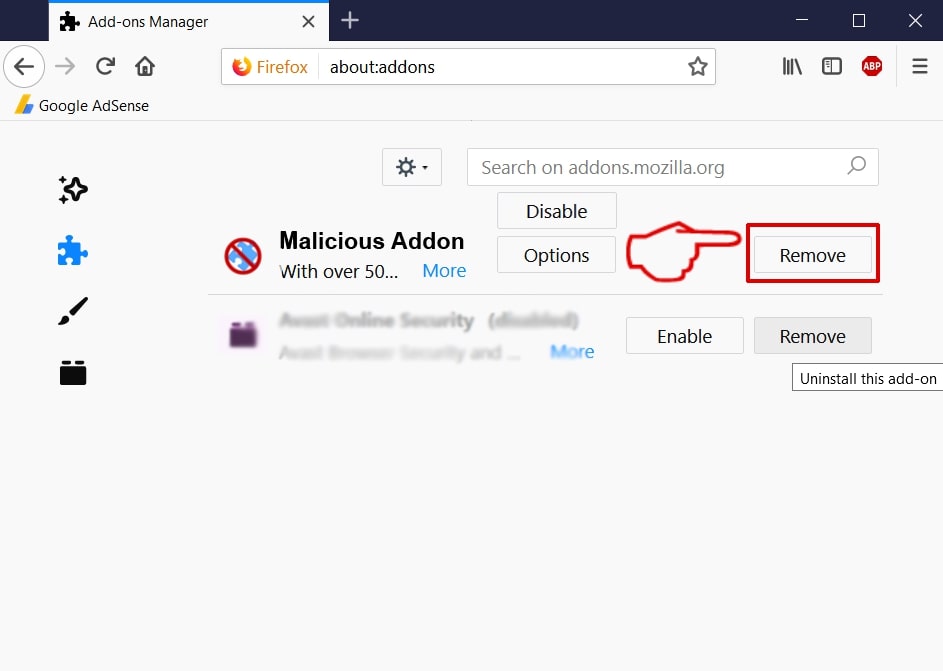What Is “Gmail Alert: Account Has Been Hacked Mac”?
The message “Gmail Alert: Account Has Been Hacked” is a scam that usually shows up on your Mac’s browsers as a pop-up webpage. This Gmail alert virus is designed to make you believe that your Mac is under threat, pushing you to call a fake tech support number. This scam commonly appears due to browser redirects linked with adware or other malware present on your Mac. Such harmful programs often generate ads that lead to these scams or dubious websites.
You can remove the “Gmail Alert: Account Has Been Hacked” scam by following the guide given at the end of this post.

Gmail Alert: Account Has Been Hacked Mac Details
| Name | Gmail Alert: Account Has Been Hacked |
| Type | Mac Scam / Unwanted Software |
| Short Description | A page that aims to get you to call scammers’ fake tech support number. |
| Symptoms | You get a redirect to a web page, that aims to convince you to call a fake tech support number and scares you that you have viruses. |
| Distribution Method | Bundled downloads. Web pages which may advertise it. Because of a browser redirect. |
| Detection Tool |
See If Your macOS Has Been Affected by Gmail Alert: Account Has Been Hacked
Download
Malware Removal Tool
|
How Did I Get the Gmail Alert Virus?
Typically, this scam is linked with a form of malicious software or deceptive approach called ASK YOU. This scareware is crafted to convince users that their device or account is at risk, prompting them to call a fake support number, click on a dangerous link, or download harmful software.
Scareware is often associated with tech-support scams, pushing rogue security or antivirus software. In most cases, this software turns out to be nothing but bloatware, designed to negatively impact your computer’s performance. Even though relatively harmless, scareware can damage your computer or can open the door to more severe issues.
Here are a few ways this scareware could have infiltrated your device:
- By visiting compromised websites: Some sites contain malicious scripts that can display such pop-ups. Even legitimate websites can display such messages if they’re compromised.
- By clicking on untrustworthy links: Such pop-ups can be triggered by clicking on links in suspicious emails, social media messages, or other communication channels. This approach is commonly used in phishing attempts.
- Through Adware or Potentially Unwanted Programs (PUPs): These might have been installed on your device along with other software. These programs often display misleading pop-ups or redirect your browser to suspicious websites.
- Through harmful apps or browser extensions: Certain apps or browser extensions might display such messages or redirect your browser to show them.
Other versions of this pop-up include the iCloud Hacked malware. If you encounter such a pop-up, it’s advised not to interact with it and instead close the browser tab or window. To fully tackle this, consider running a scan with a reputable antivirus or anti-malware software for Mac to check for and eliminate any potentially unwanted software on your device.
What Does “Gmail Alert: Account Has Been Hacked” Pop-up Do?
This scam resembles many other fake tech support scams that target Mac users:
- (3) Viruses Has Been Detected on Your iPhone
- Your Windows is Infected With (3) Viruses Pop-up
- Your OS Sierra is infected with (3) viruses!
- Your Windows Computer is Infected With (4) Viruses!
All these scams have one thing in common: they aim to make you call scammer-operated, fake tech support numbers or download deceitful security programs. These fraudulent programs pretend to be optimizers or antivirus applications for Mac and falsely claim that numerous viruses have been detected on your Mac. The ultimate goal is to scare you into either paying money to the scammers over the phone or purchasing the license for the counterfeit antivirus tool, costing hundreds of dollars.
Is It a Virus?
Seeing the “Gmail Alert: Account Has Been Hacked” message on your Mac is a potential sign of unwanted software, such as adware or browser hijackers. These programs often get installed on your computer as optional extras when you download other applications.
If you’re affected by adware, you may see several types of ads while you browse:
- Banners
- Ad-supported search results
- Highlighted text ads
- Pop-ups
- Browser redirects
Is the Gmail Alert Virus Dangerous?
The “Gmail Alert: Account Has Been Hacked” scam itself is not the only risk. The ads associated with it could redirect you to dangerous sites that pose further threats to your Mac, such as:
- Fake survey sites
- Phishing sites aiming to steal your passwords
- Scam sites
- Websites infected with viruses
It’s crucial to secure your Mac as soon as possible to mitigate these risks.
How to Remove “Gmail Alert: Account Has Been Hacked”
To remove the “Gmail Alert: Account Has Been Hacked” scam from your Mac, you need to detect and delete the software causing it to appear. You can use the removal guide below to get rid of these annoying applications. If you’re having difficulty identifying the root cause, security experts strongly recommend downloading and running a scan of your computer using professional anti-malware software. Such tools are designed to effectively detect and remove unwanted programs and prevent them from reappearing.
Steps to Prepare Before Removal:
Before starting to follow the steps below, be advised that you should first do the following preparations:
- Backup your files in case the worst happens.
- Make sure to have a device with these instructions on standy.
- Arm yourself with patience.
- 1. Scan for Mac Malware
- 2. Uninstall Risky Apps
- 3. Clean Your Browsers
Step 1: Scan for and remove Gmail Alert: Account Has Been Hacked files from your Mac
When you are facing problems on your Mac as a result of unwanted scripts and programs such as Gmail Alert: Account Has Been Hacked, the recommended way of eliminating the threat is by using an anti-malware program. SpyHunter for Mac offers advanced security features along with other modules that will improve your Mac’s security and protect it in the future.

Quick and Easy Mac Malware Video Removal Guide
Bonus Step: How to Make Your Mac Run Faster?
Mac machines maintain probably the fastest operating system out there. Still, Macs do become slow and sluggish sometimes. The video guide below examines all of the possible problems that may lead to your Mac being slower than usual as well as all of the steps that can help you to speed up your Mac.
Step 2: Uninstall Gmail Alert: Account Has Been Hacked and remove related files and objects
1. Hit the ⇧+⌘+U keys to open Utilities. Another way is to click on “Go” and then click “Utilities”, like the image below shows:

2. Find Activity Monitor and double-click it:

3. In the Activity Monitor look for any suspicious processes, belonging or related to Gmail Alert: Account Has Been Hacked:


4. Click on the "Go" button again, but this time select Applications. Another way is with the ⇧+⌘+A buttons.
5. In the Applications menu, look for any suspicious app or an app with a name, similar or identical to Gmail Alert: Account Has Been Hacked. If you find it, right-click on the app and select “Move to Trash”.

6. Select Accounts, after which click on the Login Items preference. Your Mac will then show you a list of items that start automatically when you log in. Look for any suspicious apps identical or similar to Gmail Alert: Account Has Been Hacked. Check the app you want to stop from running automatically and then select on the Minus (“-“) icon to hide it.
7. Remove any leftover files that might be related to this threat manually by following the sub-steps below:
- Go to Finder.
- In the search bar type the name of the app that you want to remove.
- Above the search bar change the two drop down menus to “System Files” and “Are Included” so that you can see all of the files associated with the application you want to remove. Bear in mind that some of the files may not be related to the app so be very careful which files you delete.
- If all of the files are related, hold the ⌘+A buttons to select them and then drive them to “Trash”.
In case you cannot remove Gmail Alert: Account Has Been Hacked via Step 1 above:
In case you cannot find the virus files and objects in your Applications or other places we have shown above, you can manually look for them in the Libraries of your Mac. But before doing this, please read the disclaimer below:
1. Click on "Go" and Then "Go to Folder" as shown underneath:

2. Type in "/Library/LauchAgents/" and click Ok:

3. Delete all of the virus files that have similar or the same name as Gmail Alert: Account Has Been Hacked. If you believe there is no such file, do not delete anything.

You can repeat the same procedure with the following other Library directories:
→ ~/Library/LaunchAgents
/Library/LaunchDaemons
Tip: ~ is there on purpose, because it leads to more LaunchAgents.
Step 3: Remove Gmail Alert: Account Has Been Hacked – related extensions from Safari / Chrome / Firefox









Gmail Alert: Account Has Been Hacked-FAQ
What is Gmail Alert: Account Has Been Hacked on your Mac?
The Gmail Alert: Account Has Been Hacked threat is probably a potentially unwanted app. There is also a chance it could be related to Mac malware. If so, such apps tend to slow your Mac down significantly and display advertisements. They could also use cookies and other trackers to obtain browsing information from the installed web browsers on your Mac.
Can Macs Get Viruses?
Yes. As much as any other device, Apple computers do get malware. Apple devices may not be a frequent target by malware authors, but rest assured that almost all of the Apple devices can become infected with a threat.
What Types of Mac Threats Are There?
According to most malware researchers and cyber-security experts, the types of threats that can currently infect your Mac can be rogue antivirus programs, adware or hijackers (PUPs), Trojan horses, ransomware and crypto-miner malware.
What To Do If I Have a Mac Virus, Like Gmail Alert: Account Has Been Hacked?
Do not panic! You can easily get rid of most Mac threats by firstly isolating them and then removing them. One recommended way to do that is by using a reputable malware removal software that can take care of the removal automatically for you.
There are many Mac anti-malware apps out there that you can choose from. SpyHunter for Mac is one of the reccomended Mac anti-malware apps, that can scan for free and detect any viruses. This saves time for manual removal that you would otherwise have to do.
How to Secure My Data from Gmail Alert: Account Has Been Hacked?
With few simple actions. First and foremost, it is imperative that you follow these steps:
Step 1: Find a safe computer and connect it to another network, not the one that your Mac was infected in.
Step 2: Change all of your passwords, starting from your e-mail passwords.
Step 3: Enable two-factor authentication for protection of your important accounts.
Step 4: Call your bank to change your credit card details (secret code, etc.) if you have saved your credit card for online shopping or have done online activiites with your card.
Step 5: Make sure to call your ISP (Internet provider or carrier) and ask them to change your IP address.
Step 6: Change your Wi-Fi password.
Step 7: (Optional): Make sure to scan all of the devices connected to your network for viruses and repeat these steps for them if they are affected.
Step 8: Install anti-malware software with real-time protection on every device you have.
Step 9: Try not to download software from sites you know nothing about and stay away from low-reputation websites in general.
If you follow these reccomendations, your network and Apple devices will become significantly more safe against any threats or information invasive software and be virus free and protected in the future too.
More tips you can find on our MacOS Virus section, where you can also ask any questions and comment about your Mac problems.
About the Gmail Alert: Account Has Been Hacked Research
The content we publish on SensorsTechForum.com, this Gmail Alert: Account Has Been Hacked how-to removal guide included, is the outcome of extensive research, hard work and our team’s devotion to help you remove the specific macOS issue.
How did we conduct the research on Gmail Alert: Account Has Been Hacked?
Please note that our research is based on an independent investigation. We are in contact with independent security researchers, thanks to which we receive daily updates on the latest malware definitions, including the various types of Mac threats, especially adware and potentially unwanted apps (PUAs).
Furthermore, the research behind the Gmail Alert: Account Has Been Hacked threat is backed with VirusTotal.
To better understand the threat posed by Mac malware, please refer to the following articles which provide knowledgeable details.


